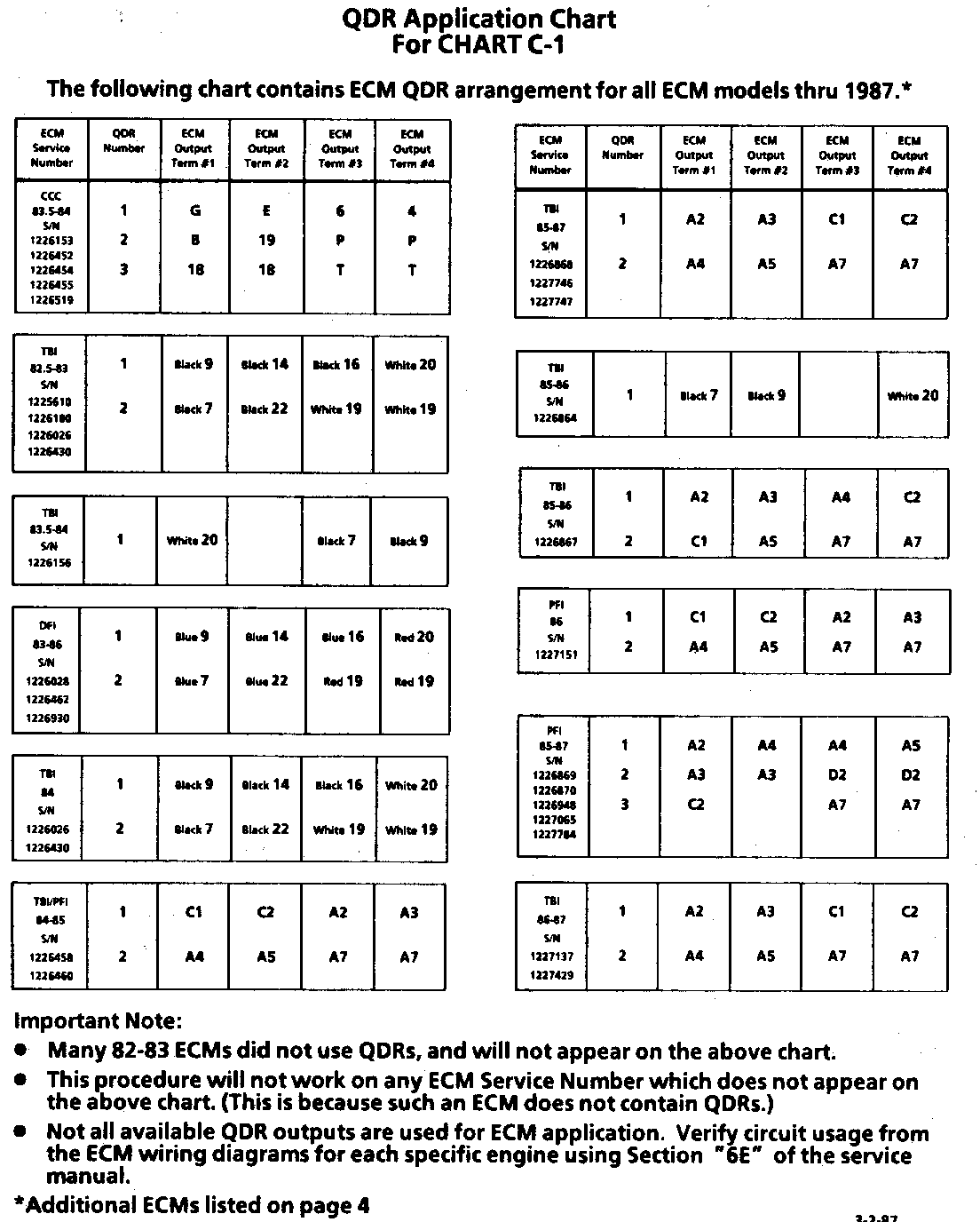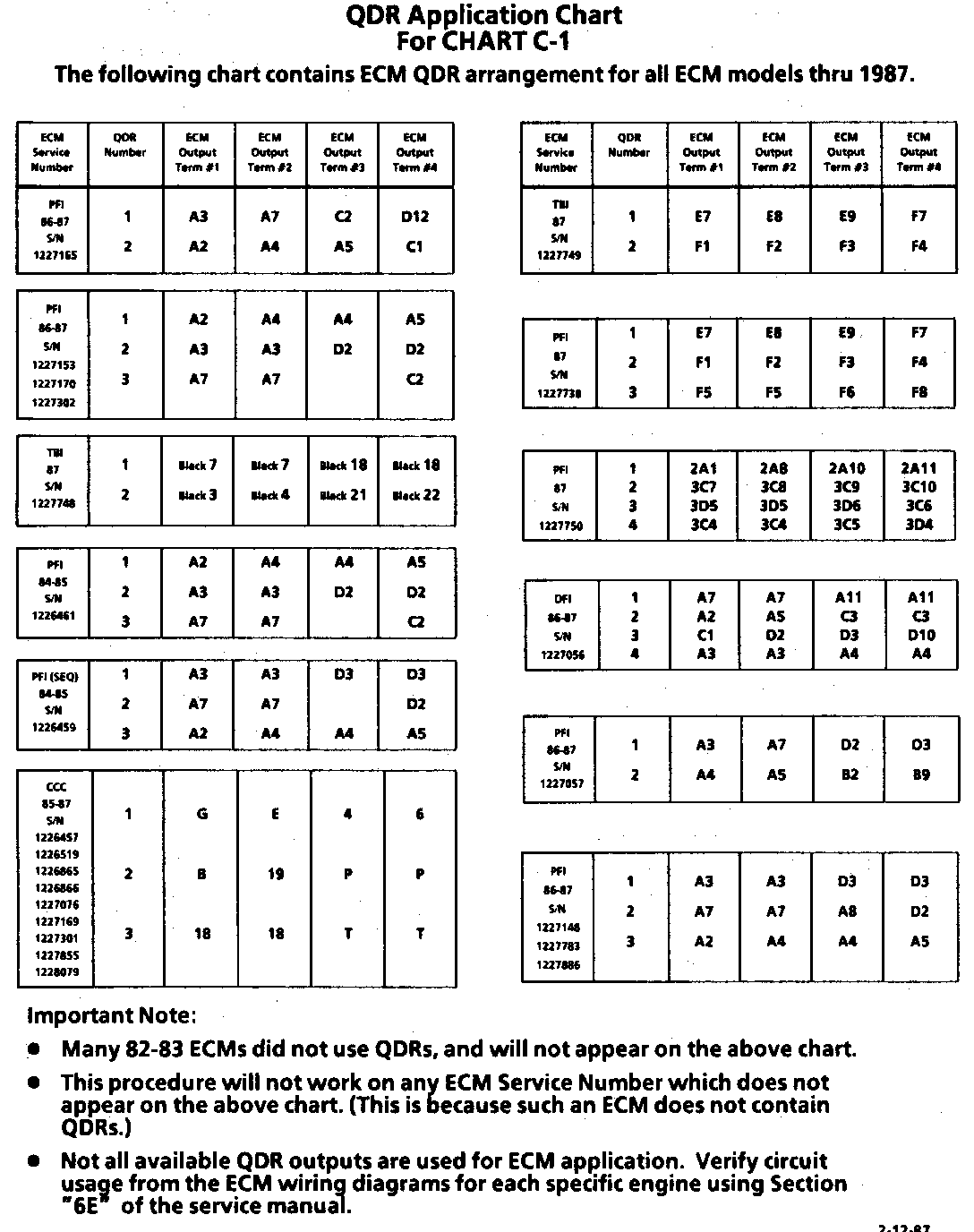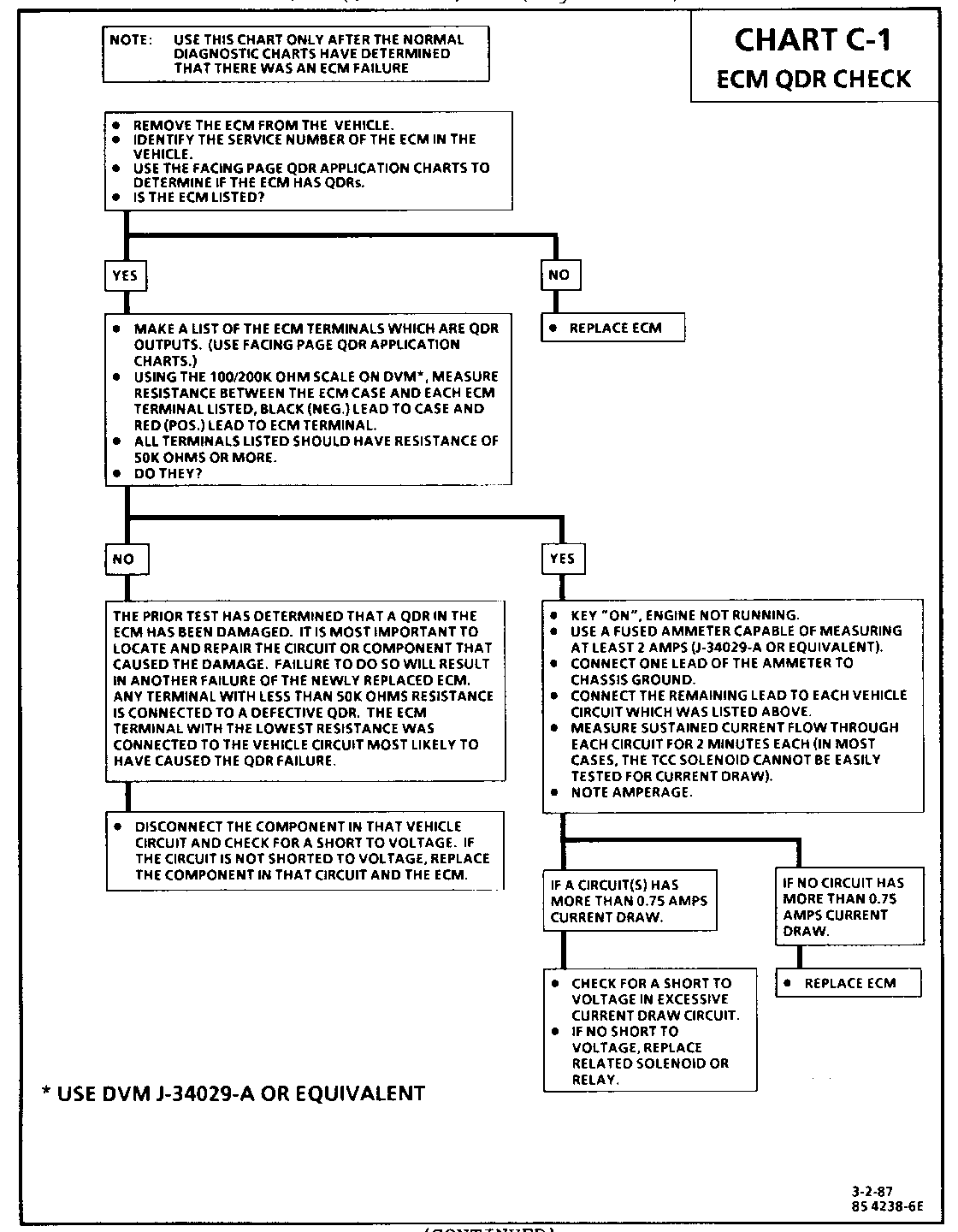NEW ECM TEST PROCEDURES ALL ECM EQUIPPED VEHICLES

MODELS: 1982-1987 ECM EQUIPPED VEHICLES
The purpose of this bulletin is to introduce new ECM test procedures to reduce the possibility of multiple ECM failures on any one vehicle.
Since 1982, most ECMs have used an integrated circuit (IC) in place of separate transistors to turn "on" or "off" different components controlled by the ECM. These ICs are called quad drivers (QDR). Each QDR has four separate outputs, meaning it can turn "on" or "off" four different items independently.
A failed QDR usually results in an ECM output becoming either shorted to ground or open. Many times all four QDR outputs will be inoperative if just one vehicle circuit is faulty.
The revised diagnostic chart incorporates new test procedures designed to identify a damaged QDR and associated circuits. Once identified, the circuit must be repaired to reduce the incidence of repeat ECM failures.
This chart supplements the current service manual procedure and it is strongly suggested that it be used anytime the current procedures lead to a "Replace ECM" conclusion on 1982-1987 vehicles.
See the attached list for model year, engine, part number and circuit identification.
IMPORTANT NOTE:
Many 82-83 ECMs did not use QDRS, and will not appear on the following chart.
This procedure will not work on any ECM Service Number which does not appear on the following chart. (This is because such an ECM does not contain QDRS.)
Not all available QDR outputs are used for ECM application. Verify circuit usage from the ECM wiring diagrams for each specific engine using Section "6E" of the appropriate service manual.
1987 S/T Trucks with 2.5L (E) engines use the new GMP4 ECM. The GMP4 ECM uses circuit breakers to protect the QDR'S. If the QDR circuit breaker is opened due to a short or ground, by unplugging the ECM the breaker will reset itself.



General Motors bulletins are intended for use by professional technicians, not a "do-it-yourselfer". They are written to inform those technicians of conditions that may occur on some vehicles, or to provide information that could assist in the proper service of a vehicle. Properly trained technicians have the equipment, tools, safety instructions and know-how to do a job properly and safely. If a condition is described, do not assume that the bulletin applies to your vehicle, or that your vehicle will have that condition. See a General Motors dealer servicing your brand of General Motors vehicle for information on whether your vehicle may benefit from the information.
